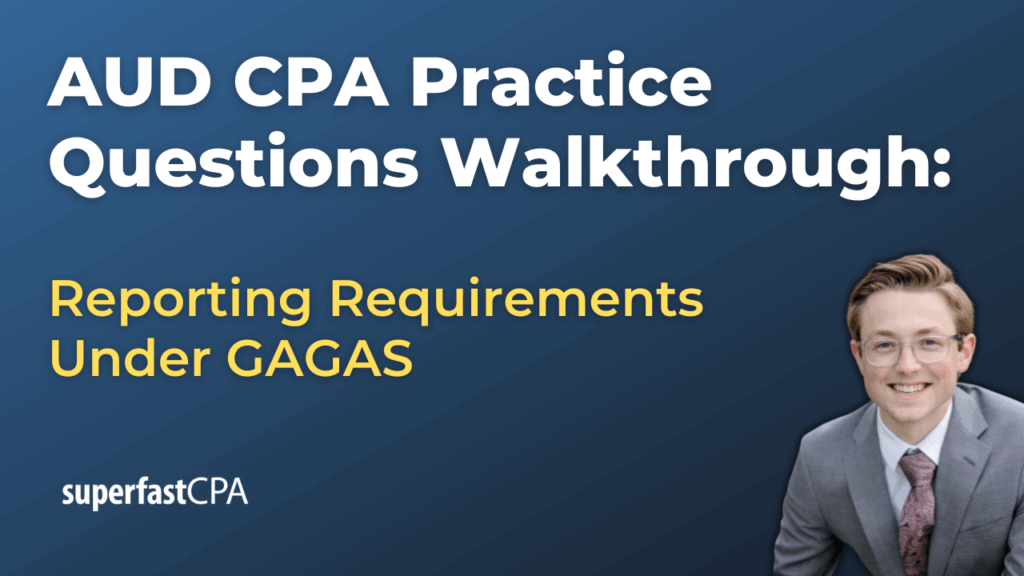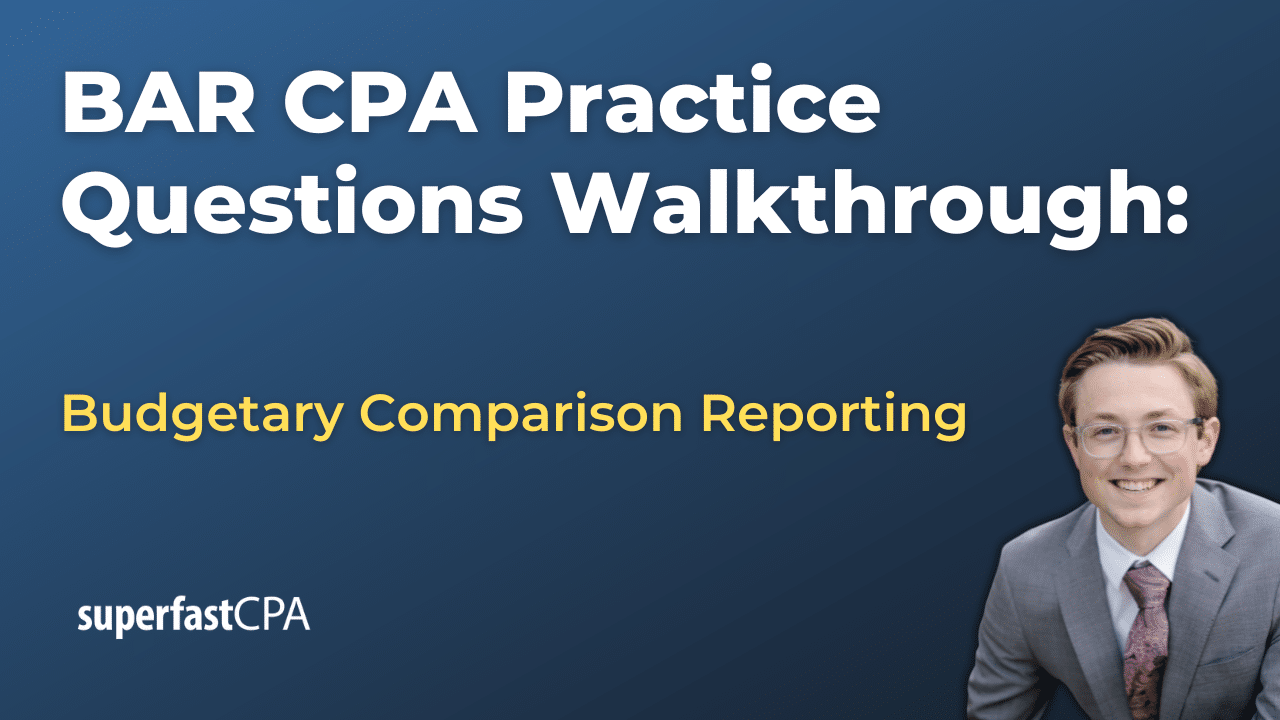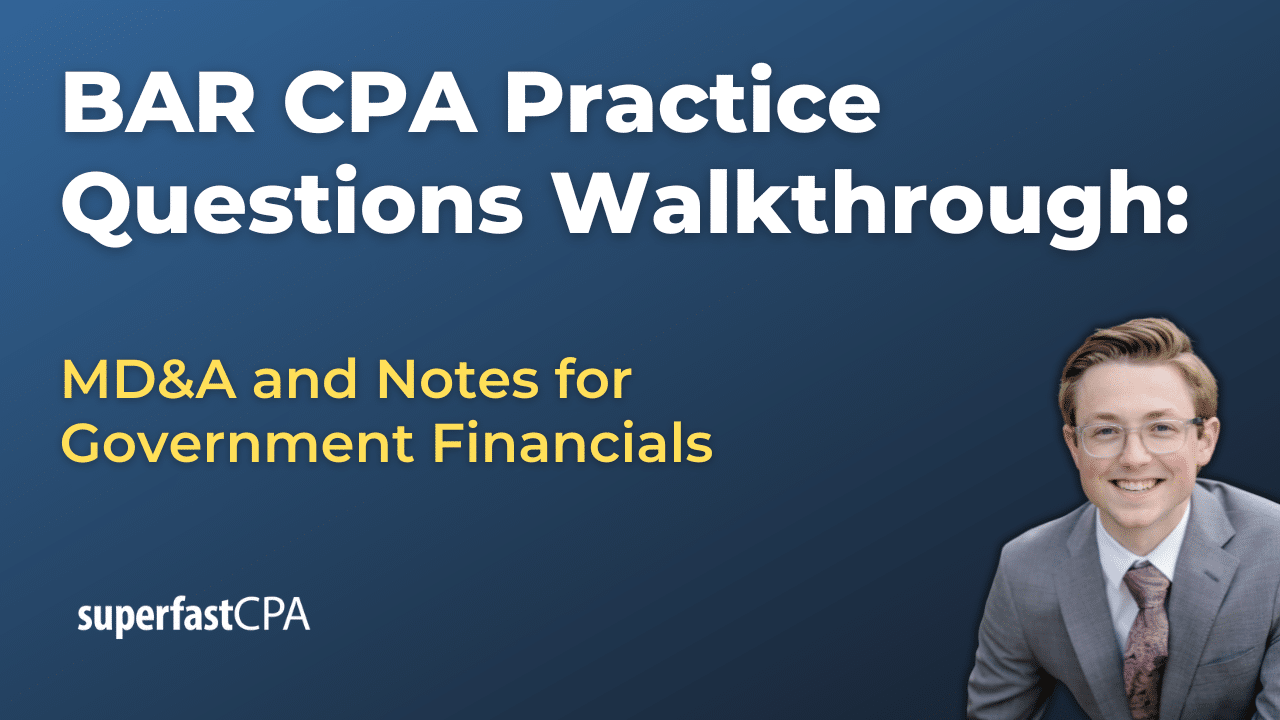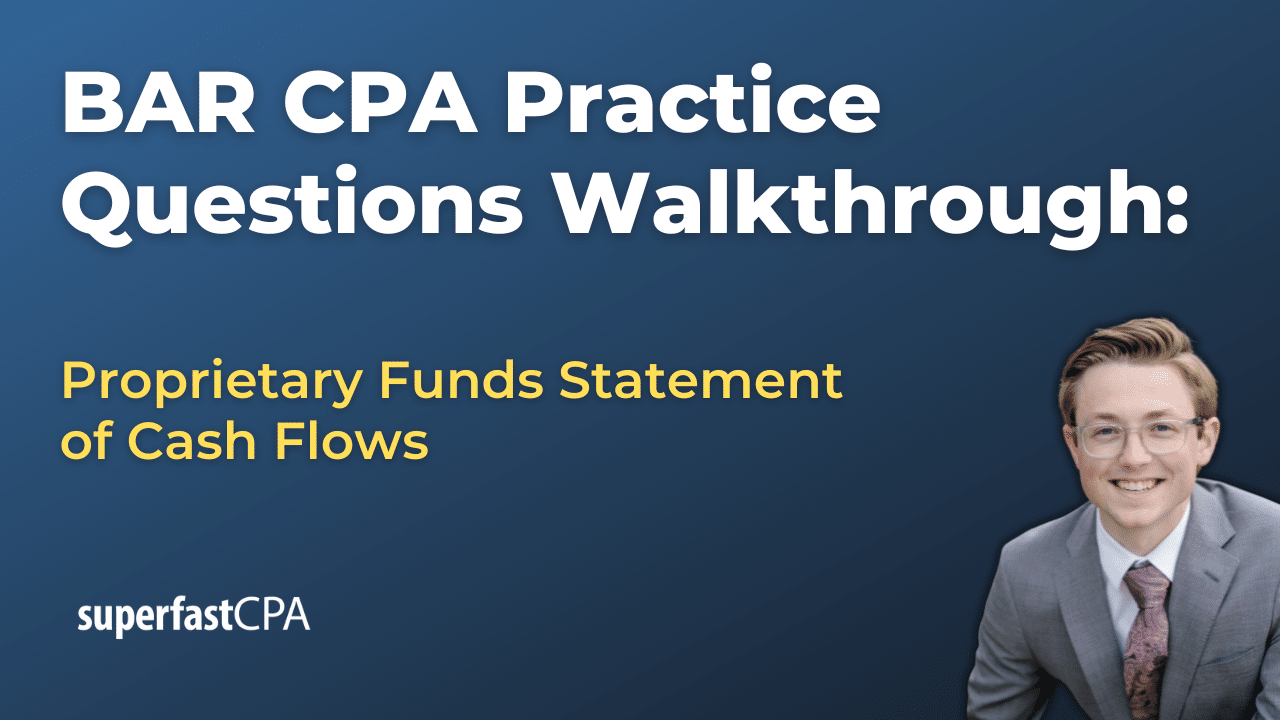In this video, we walk through 5 AUD practice questions teaching about reporting requirements under GAGAS. These questions are from AUD content area 4 on the AICPA CPA exam blueprints: Forming Conclusions and Reporting
The best way to use this video is to pause each time we get to a new question in the video, and then make your own attempt at the question before watching us go through it.
Also be sure to watch one of our free webinars on the 6 “key ingredients” to an extremely effective & efficient CPA study process here…
Reporting Requirements Under GAGAS
Government Accountability Office (GAO) Government Auditing Standards—commonly known as the Yellow Book—set the framework for audits of government entities and recipients of federal funds. These standards establish the auditor’s responsibilities for reporting on internal control over financial reporting and on compliance with laws, regulations, contracts, and grant agreements that have a material effect on the financial statements.
If you’re preparing for an exam, working in audit, or managing a government-funded entity, it’s important to understand these key reporting requirements under GAGAS.
GAGAS Imposes Additional Auditor Responsibilities Beyond GAAS
Audits conducted under GAGAS are more demanding than those under GAAS alone. Auditors must go beyond forming an opinion on the financial statements; they are also responsible for evaluating and reporting on:
- Internal control over financial reporting
- Compliance with applicable laws, regulations, and agreements
This requirement ensures that federal funds are used appropriately and in accordance with all legal and contractual obligations. For example, if a local government receives federal grant money to build infrastructure, the auditor must assess whether the local government complied with the grant terms and federal regulations—and report the results.
Written Reporting on Internal Control Is Required in Every GAGAS Audit
GAGAS requires auditors to provide a written report on internal control over financial reporting in all financial statement audits—even when no internal control issues are found. This report must include:
- A description of the scope of the auditor’s testing of internal control
- Any significant deficiencies or material weaknesses identified
For instance, if an auditor finds that the client lacks segregation of duties in handling cash receipts, this must be documented in the written internal control report, even if the financial statements are otherwise fairly presented.
The report may be included in the audit report itself or issued as a separate document. If issued separately, the auditor must reference it in the main report.
GAGAS Requires Reporting on the Scope of Compliance Testing
In addition to internal control, GAGAS mandates that auditors report on the scope of testing for compliance with laws, regulations, contracts, and grant agreements. This applies when such provisions could materially affect the financial statements.
Unlike GAAS, which generally does not require this level of compliance reporting, GAGAS explicitly calls for:
- A description of the compliance requirements evaluated
- The nature and extent of testing performed
- Whether any instances of noncompliance were found
For example, in an audit of a federally funded housing program, the auditor would need to test compliance with eligibility requirements and procurement rules, and disclose the scope of that testing in the report.
Reporting Illegal Acts and Material Fraud Is Mandatory
GAGAS requires auditors to take specific actions when they detect fraud or illegal acts that are material to the financial statements or to compliance with legal requirements.
Steps include:
- Extending audit procedures to determine whether fraud or noncompliance has occurred
- Communicating material instances in the report on compliance
- Reporting directly to outside parties (such as the funding agency or oversight body) if management refuses to act
Example: If an auditor uncovers that a city official misused grant funds for personal travel and management refuses to report it, the auditor may be required to notify the federal awarding agency directly.
This requirement strengthens accountability and reduces the risk of misused public funds going unreported.
Evaluating and Responding to Potential Fraud
When auditors become aware of potential fraud, they are required to:
- Apply additional procedures to determine if fraud has occurred
- Evaluate whether the fraud has a material impact on the financial statements or compliance
- Communicate findings to those charged with governance and, if needed, external parties
Example: If payroll records suggest ghost employees are being paid with federal funds, the auditor must investigate further and report any confirmed fraud that is material.
Even if the financial statements appear accurate, material noncompliance or misuse of funds must be disclosed when relevant to stakeholders.
Examples in Practice
Let’s say a nonprofit organization receives $2 million in federal grant funds to provide community health services. An auditor performing a GAGAS-compliant audit must:
- Evaluate internal controls over financial reporting and document the scope of testing
- Examine whether the nonprofit complied with the grant’s eligibility, spending, and documentation requirements
- Report any identified material noncompliance, such as unsupported costs
- Investigate and report potential fraud, like duplicated service claims or altered invoices
Even if the financial statements are accurate, the auditor must still issue separate or included reports on internal control and compliance, detailing the work performed and findings.
Key Takeaways
- GAGAS builds on GAAS by adding mandatory reporting on internal control and compliance testing.
- Written reports on internal control are always required, even if no issues are found.
- Compliance testing must be described in the report, including procedures and results.
- Material fraud and illegal acts must be reported—and in some cases, directly to external authorities.
- These requirements promote transparency and accountability in how public funds are managed.
Whether you’re studying for an exam or preparing for a GAGAS audit, understanding these core responsibilities helps ensure compliance with federal auditing standards—and strengthens public trust in the financial reporting of government programs.












